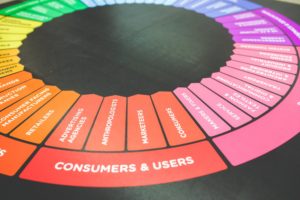Customer Segmentation Helps You Divide and Conquer
January 10, 2018
Knowing Your Audience
There are a lot of sprockets in an effective marketing machine. The most important and fundamental piece of your marketing program is segmentation. It powers the works.
One size fits all approaches don’t work for either jeans or marketing. Your marketing program needs to be custom-fitted. If you can figure out the most practical way of splitting up your customer base, you can then focus your thinking on reaching and engaging with them. Defined, research-based segments enable you to craft impactful strategies, messages and campaigns that appeal to each segment.
Segmentation Enables Strategy
Segmentation is the process of identifying everyone with whom you do business, splitting them into groups and then developing engagement strategies for each group. Traditionally, companies look solely at the end-users of their products and services when segmenting their customers. However, it is important to make sure you have a firm view of all the groups that are involved in your business. For example, let’s pretend you work for a large university. A basic segmentation approach would target just students. A more advanced, robust segmentation methodology would also include donors, alumni, media partners, sports fans, and government institutions.
There’s No Silver Bullet
There is no general, simple, bullet-proof means of segmenting customers. The path of least resistance is to simply divide everything up by age or geography or shoe size and call it a day. It’s a very old school approach. It’s better than doing nothing, because at least it may provide you with some imagery ideas, however you can do better. When it comes to your product and services, is membership in a broad demographic really that telling? A 50 year-old running a surf shop on the North Shore has entirely different footwear needs than a 50 year-old working at McMurdo Station.
The good news: You can do this. It’s going to take some emails, a few phone calls and probably a lot of meetings, but you can definitely do this. The bad news: This isn’t as prescriptive (or as “easy”) as assembling IKEA furniture.
A Tactical Segmentation Approach
When it comes to developing a customer segmentation, keep your end goal in sharp focus. Build these segments so they’ll enable your strategic planning, research projects and KPI activities.
Step 1: Identify your customers.

Figure out how your company makes money. Review reports and financials to assess the current ways your organization tracks revenue, and what they already know about these groups.
Step 2: Divide into distinct groups.
Armed with all the available information about your customers, figure out the best way to split these customers into buckets. To the greatest extent possible, keep these buckets mutually exclusive. Develop two or three different ways to segment your customers.
Step 3: Find the strongest model.
Here’s the hardest step. Now that you’ve got your segments, it’s time to test them. Ultimately, you’ll be aligning the business strategy to these segments. Create a segment matrix with all of your segments from all of your frameworks along the top, and this data along the side:
- Financials (e.g. revenue, profit, margin)
- Basic Demographics (e.g. age, geographic location, gender)
- Psychographics (e.g. likes, dislikes, attitudes, aspirations)
- Market Fundamentals (e.g. number of current customers, market share, growth potential, product adoption rates)
Make a decision. If you can’t determine which is the best group, ask around. And if that doesn’t work, call us. We’ll be happy to provide some guidance.
Step 4: Go forth and conquer.
Socialize your segments with key stakeholders around your company. If it makes sense to most of these groups, then you’ve got a winning formula. Develop marketing plans for each of these segments, and develop the means of measuring the impact of your efforts on the business.
Let us know how it goes. Good luck!
